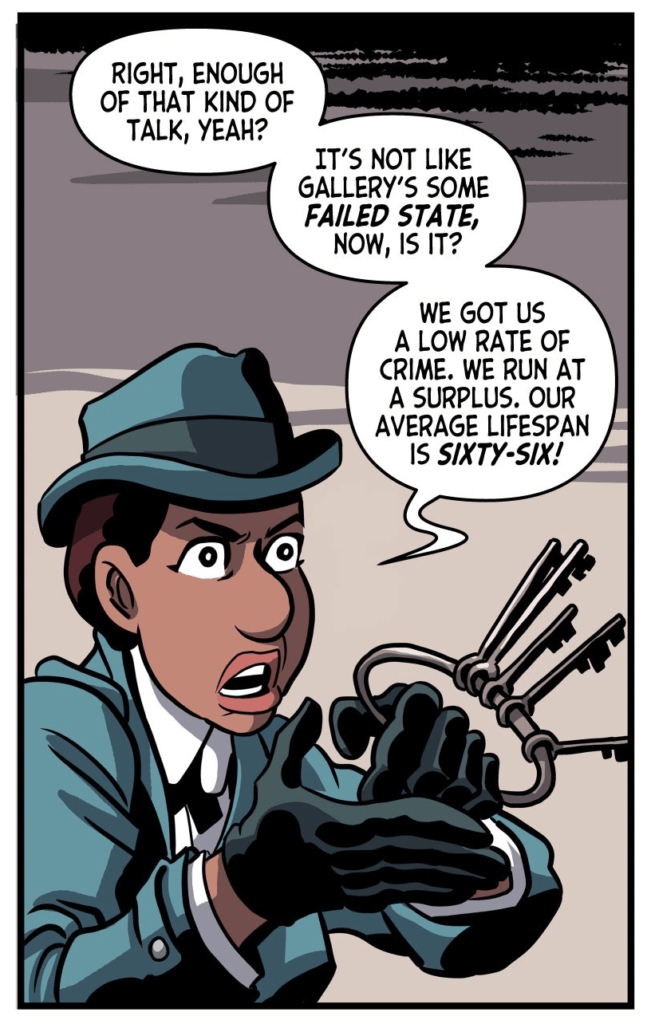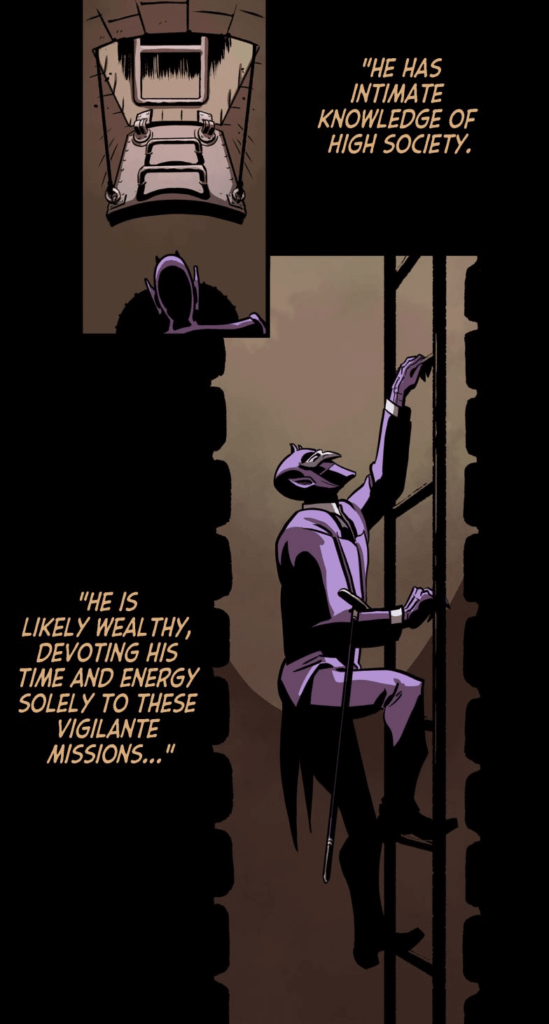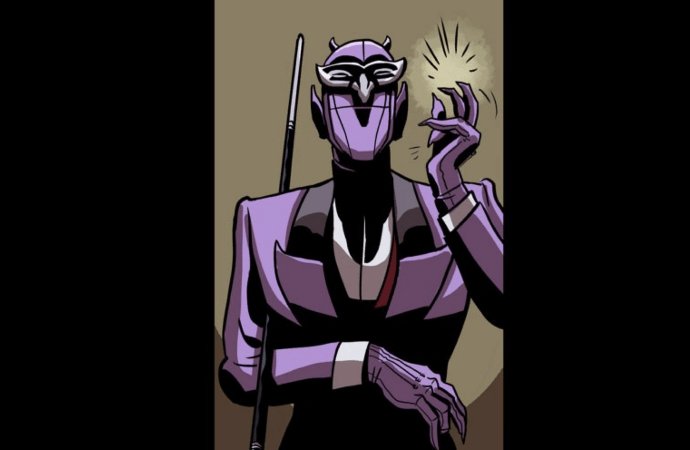In 2019 there were several Webtoons nominated for the “Best Webcomic” Eisner award, two that were (and still are) extremely popular (Let’s Play by Mongie and Lore Olympus by Rachel Smythe) and one less so. Lavender Jack by Dan Schkade was a comic I had never heard of until I saw it on the Eisner nominations list. Now I want everyone to hear about it.
Lavender Jack
Created by Dan Schkade, colored by Jenn Manley Lee
Webtoon
2018-present
On a webcomics portal full of anime-esque pastel pretty boys and adorkable quirky protagonist girls, Lavender Jack stands out as a stylized, noir-inspired vigilante superhero adventure story. Set in an alternate-universe “nineteen hundred something or other” in the city-state of Gallery, the corrupt elite are kept in check by the mysterious masked figure known as Lavender Jack.
The first season starts with the mayor hiring legendary French detective Theresa Ferrier to help uncover Lavender Jack’s true identity. Instead, Ferrier, the eccentric Sir Mimley, and a host of other interesting characters are soon embroiled in a complicated plot involving secret societies and troubled pasts, and powerful people who will stop at nothing to maintain their prestige.
Lavender Jack is, first of all, fun. It’s exciting. Each episode is paced in a way that ratchets up the tension and makes you want to keep reading. The discussion of class and politics, while straightforward, is generally well-handled. I especially love Honoria Crabb, a grumpy and principled police inspector whose arc leads her to realize that upholding the law and serving the people of Gallery doesn’t always mean the same thing.

In a Q+A “intermission” update, Schkade explains his design for Ferrier was intended to be “Someone I’d never get to draw in a leading role in most of my work-for-hire jobs.” A friend of mine pointed out that as the comic continues, the art grows more and more stylized and exaggerated, and Ferrier’s facial features in particular become overexaggerated in a way that verges on grotesque. Drawing Ferrier this way, so she looks more like the Thing from Fantastic 4 than a Black woman, contributes to a pervasive history of dehumanization gender nonconforming and darker-skinned Black women experience.

No other character is as intensely stylized as Ferrier is, and there are several other major Black female characters (like Crabb, and ace reporter Abbey Quarrel, and the Duchess Okoyo) whose designs are completely different. I don’t believe this was done with malicious intent, but it could be alienating to some readers and may reflect internal biases the author hasn’t fully interrogated.
Besides the design, I really like Ferrier as a character. She’s the greatest detective in the world, and Schkade shows her deductive reasoning skills and brilliant insights over and over, convincing you that Ferrier’s reputation is entirely deserved. She’s also married to a woman, a painter named Marguerite whose mind is going in her old age. Ferrier’s love for her wife is part of her motivation throughout the story, and they’re really cute together and it’s nice. There are multiple queer characters whose sexuality is important to the story and yet not their entire personality, and it’s just… it’s nice.
The visuals are refreshing in their simplicity: solid black shadows and big swooping curves that still make it easy to tell characters apart. Every major character has very different faces and body types, and in cases where characters do look similar, it’s usually intentional and pays off later. Jenn Manley Lee’s limited color palette makes each episode feel unified and pulled together. The lettering is stylish and sleek as well.

Lavender Jack reminds me of the City Watch books in the Discworld series by Terry Pratchett, a similar level of drama and politics combined with lush and visually interesting action scenes. Lavender Jack the character makes guns explode with a snap of his fingers, and perform death-defying feats of acrobatics all over the city. Schkade cites P. G. Wodehouse’s Jeeves and Wooster books as a major inspiration, as well as classic mystery novels like the cases of Sherlock Holmes and Hercule Poirot. If you like any of those, you’d probably enjoy Lavender Jack.


